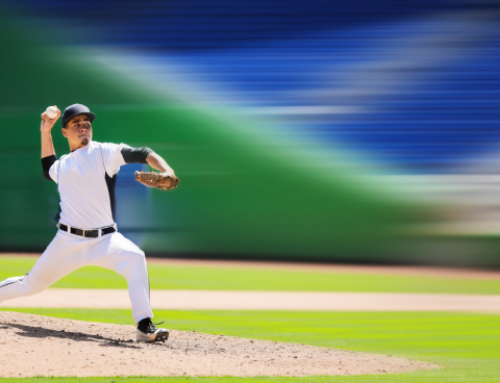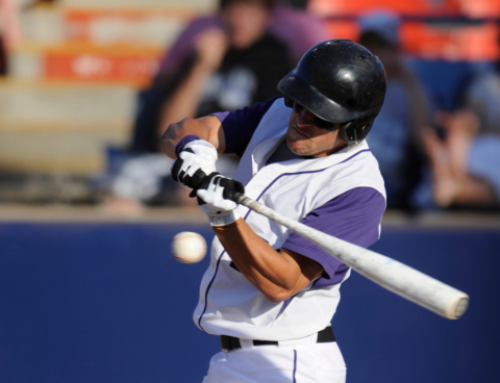Simple Youth Baseball Drills for Infielders
Coaching baseball for young athletes can be an incredibly rewarding experience, but only if you know what you are doing. If you are unprepared, both the players and coaches will have a long, depressing season. One of the best ways to help you prepare your team is to get them versed in different situations they’ll experience during games. This article outlines several common situations that occur in the baseball infield.
Catcher Throwdown
This drill prepares the team for two situations. One is a dropped third strike where the hitter is running for first base. The second is for trying to get out baserunners attempting to steal a base.
For this drill, have the infield set up in their standard positions. The pitcher will throw the ball to the catcher, and as they do so, the coach should yell out a base. The catcher will catch the ball, pop up in an athletic position, and throw to the indicated base. As the catcher is popping up, the appropriate infielder will move to catch the ball and practice tagging an invisible sliding runner. This should be practiced to each of the bases. The shortstop should back up the second baseman on a throw to second, and the pitcher should practice covering first or third base if a throw to those locations happens to get by the infielder.
Passed Balls
This drill prepares the team for a situation that can win or lose the game during crunch time. If there’s a runner on third base and the ball gets past the catcher, they’re likely going to take off for home. In these crucial situations, the pitcher must rush toward home plate as the catcher scrambles to locate and retrieve the ball.
For this drill, I have the pitcher set up on the mound and the catcher get into a catching stance. As the coach, I throw the ball over and behind the catcher. The catcher then needs to scramble and run for the ball while the pitcher runs to home plate. The catcher tosses the ball to the pitcher, who then must catch it and practice applying a tag to an imaginary runner sliding toward home. The quicker the catcher can locate the ball and get it to the pitcher, the better chance you’ll have of saving what could be a crucial run.
Pickoffs
This drill prepares the team for pickoff situations with baserunners. It also teaches the team to watch the catcher’s signs.
For this drill, have the entire infield set up normally. The catcher will then give the pitcher the sign for a pickoff to one of the bases. The pitcher will then execute the pickoff to the appropriate base. Like in the throwdown drill, the pitcher needs to go cover first or third if the ball gets past them, and the shortstop needs to back up second base on the pickoff throw.
Plays at First
This basic drill teaches the team to get the batter out at first base, which is the most common result of a fielded ground ball. The infield sets up in their standard positions. From here, the coach hits ground balls to each of the infield positions so that they have to practice fielding the ball and making a good throw to first base. The coach should vary the angle and exit velocity of the ground balls to teach their players how to field a variety of batted balls. Some bunts should be peppered in so the players (including the catcher) get used to responding accordingly. On certain balls hit to the first baseman, the pitcher will need to cover first base.
Double Plays
This drill prepares the team for double-play situations. The infield sets up like normal. The coach then yells out how many outs there are, how many baserunners are on and, where those runners are located (these baserunners can be imaginary to start). The coach will then hit a ground ball and the players try to turn a smart double play. This drill not only works on fielding, throwing and catching efficiently, but also the awareness of your players to react intelligently in a variety of different situations.
You can start by practicing all of these drills with the absence of base runners. Once your players understand the drill, you can add baserunners to make the situations as game-like as possible. The key is finding the right balance between making the drills as similar to a game as possible but also keeping player safety as the top priority (the baserunners shouldn’t try to break up a double play with an aggressive slide during practice, for example).
I recommend integrating just one of these drills into each of your practices. More than that, and you run the risk of confusing young baseball players. But you’ll be surprised how taking 10-15 minutes to focus on one of these youth baseball infield drills can have a noticeable impact if or when the situation comes up during a game!
Photo Credit: RichVintage/iStock
READ MORE:
RECOMMENDED FOR YOU
Simple Youth Baseball Drills for Infielders
Coaching baseball for young athletes can be an incredibly rewarding experience, but only if you know what you are doing. If you are unprepared, both the players and coaches will have a long, depressing season. One of the best ways to help you prepare your team is to get them versed in different situations they’ll experience during games. This article outlines several common situations that occur in the baseball infield.
Catcher Throwdown
This drill prepares the team for two situations. One is a dropped third strike where the hitter is running for first base. The second is for trying to get out baserunners attempting to steal a base.
For this drill, have the infield set up in their standard positions. The pitcher will throw the ball to the catcher, and as they do so, the coach should yell out a base. The catcher will catch the ball, pop up in an athletic position, and throw to the indicated base. As the catcher is popping up, the appropriate infielder will move to catch the ball and practice tagging an invisible sliding runner. This should be practiced to each of the bases. The shortstop should back up the second baseman on a throw to second, and the pitcher should practice covering first or third base if a throw to those locations happens to get by the infielder.
Passed Balls
This drill prepares the team for a situation that can win or lose the game during crunch time. If there’s a runner on third base and the ball gets past the catcher, they’re likely going to take off for home. In these crucial situations, the pitcher must rush toward home plate as the catcher scrambles to locate and retrieve the ball.
For this drill, I have the pitcher set up on the mound and the catcher get into a catching stance. As the coach, I throw the ball over and behind the catcher. The catcher then needs to scramble and run for the ball while the pitcher runs to home plate. The catcher tosses the ball to the pitcher, who then must catch it and practice applying a tag to an imaginary runner sliding toward home. The quicker the catcher can locate the ball and get it to the pitcher, the better chance you’ll have of saving what could be a crucial run.
Pickoffs
This drill prepares the team for pickoff situations with baserunners. It also teaches the team to watch the catcher’s signs.
For this drill, have the entire infield set up normally. The catcher will then give the pitcher the sign for a pickoff to one of the bases. The pitcher will then execute the pickoff to the appropriate base. Like in the throwdown drill, the pitcher needs to go cover first or third if the ball gets past them, and the shortstop needs to back up second base on the pickoff throw.
Plays at First
This basic drill teaches the team to get the batter out at first base, which is the most common result of a fielded ground ball. The infield sets up in their standard positions. From here, the coach hits ground balls to each of the infield positions so that they have to practice fielding the ball and making a good throw to first base. The coach should vary the angle and exit velocity of the ground balls to teach their players how to field a variety of batted balls. Some bunts should be peppered in so the players (including the catcher) get used to responding accordingly. On certain balls hit to the first baseman, the pitcher will need to cover first base.
Double Plays
This drill prepares the team for double-play situations. The infield sets up like normal. The coach then yells out how many outs there are, how many baserunners are on and, where those runners are located (these baserunners can be imaginary to start). The coach will then hit a ground ball and the players try to turn a smart double play. This drill not only works on fielding, throwing and catching efficiently, but also the awareness of your players to react intelligently in a variety of different situations.
You can start by practicing all of these drills with the absence of base runners. Once your players understand the drill, you can add baserunners to make the situations as game-like as possible. The key is finding the right balance between making the drills as similar to a game as possible but also keeping player safety as the top priority (the baserunners shouldn’t try to break up a double play with an aggressive slide during practice, for example).
I recommend integrating just one of these drills into each of your practices. More than that, and you run the risk of confusing young baseball players. But you’ll be surprised how taking 10-15 minutes to focus on one of these youth baseball infield drills can have a noticeable impact if or when the situation comes up during a game!
Photo Credit: RichVintage/iStock
READ MORE:










